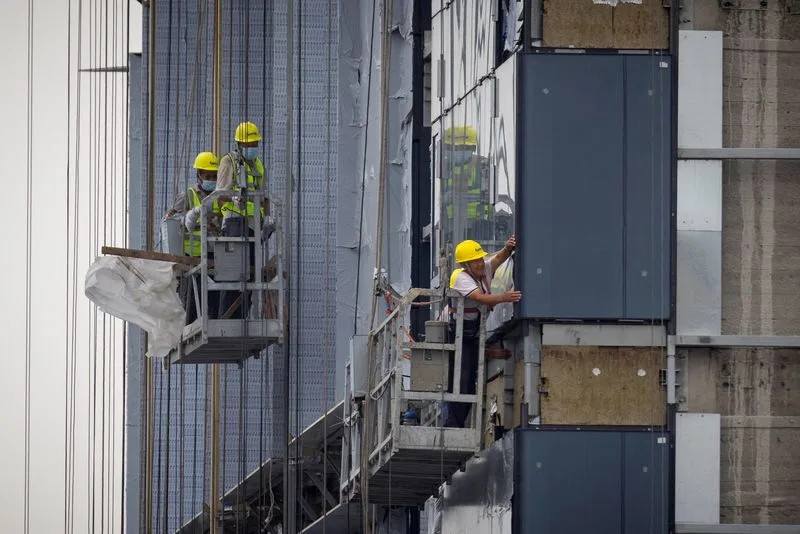By Ellen Zhang and Marius Zaharia
BEIJING/HONG KONG (Reuters) – Chinese policymakers last month unveiled a slew of support measures for the property sector, including a nod to local governments to buy “some” unsold apartments and turn them into affordable housing.
Authorities hope that over time, improving access to affordable housing could provide utility to some of the excess construction undertaken in the boom years and that it may boost domestic consumption by lowering households’ needs for savings.
Below are the key features of the policy, one of the three main vectors of China’s response to its property market downturn alongside urban renewal projects and public infrastructure upgrades.
WHAT QUALIFIES AS AFFORDABLE HOUSING?
There are three main types of affordable housing in China: public rental housing, government-subsidised rental housing and homes with shared ownership.
WHO IS ELIGIBLE FOR IT?
Public rental housing targets low-income families in urban areas, while government-subsidised rental housing is provided to new urban residents and young people.
Homes with shared ownership target people with higher incomes who are still unable to afford a home. Some cities offer such housing through programmes to attract tech talent, teachers and medical staff.
Cities have their own income threshold for eligibility.
HOW MUCH DOES IT COST?
Guidelines on rent levels and apartment sizes vary depending on the jurisdiction.
For instance, in the southern city of Changsha, home to 10.5 million, public housing rents have to be at least 30% lower than market rates. Most apartments cost 360 to 720 yuan ($50-$100) per month, depending on location, and they are smaller than 60 square metres (646 square feet) in size.
In Shanghai’s cosmopolitan Yangpu district, a 50-64 square metre one-bedroom public rental apartment costs 3,899-5,491 yuan per month, around 20% lower than market rates.
Government-subsidised rental housing usually comes at up to 90% of the market price in the area for apartments up to 70 square metres in size.
A makeshift hospital in Beijing’s Chaoyang district was turned into government-subsidised rental housing last year, with the monthly rent set at 1,200 yuan, government-backed media The Paper reported.
Local housing bureau guidelines say homes with shared ownership should cost less than commercial houses of the same quality and type in the surrounding areas.
Bruce Pang, chief China economist at Jones Lang LaSalle estimates prices of shared ownership homes are 10%-20% lower than market prices, and home buyers usually own no less than 60% of the apartment, while local governments own 10%-40%.
HOW IS IT FUNDED?
Cities with more than 3 million people are expected to take the lead in developing affordable housing.
Local governments have been providing most of the funding, but as the property crisis has dealt a blow to fiscal revenues, central authorities are stepping in.
The finance ministry in November last year frontloaded 42.5 billion yuan ($5.87 billion) in subsidies for 2024 for urban affordable housing projects.
The central bank said in January it increased the quota of pledged supplementary lending (PSL) funds by 500 billion yuan for affordable housing, urban renewal and infrastructure.
It also launched in May a 300 billion yuan relending facility for affordable housing. Banks can use the funds to lend to state-owned enterprises to buy unsold apartments at “reasonable prices” and convert them into affordable homes.
Authorities also hope a nascent real estate investment trusts industry can help raise social capital for affordable housing.
WHAT ARE CHINA’S AFFORDABLE HOUSING TARGETS?
The housing ministry said in the 14th five-year plan for 2021-2025 that its goal was to provide 8.7 million units of government-subsidised rental housing.
By the end of 2023, two thirds of them had been delivered, according to official data.
But affordable housing is only expected to grow in prominence in the future. Ratings agency S&P Global estimated that social housing accounted for 8% of primary sales in major cities in 2023 and could reach 20% in 2026.
($1 = 7.2466 Chinese yuan)
